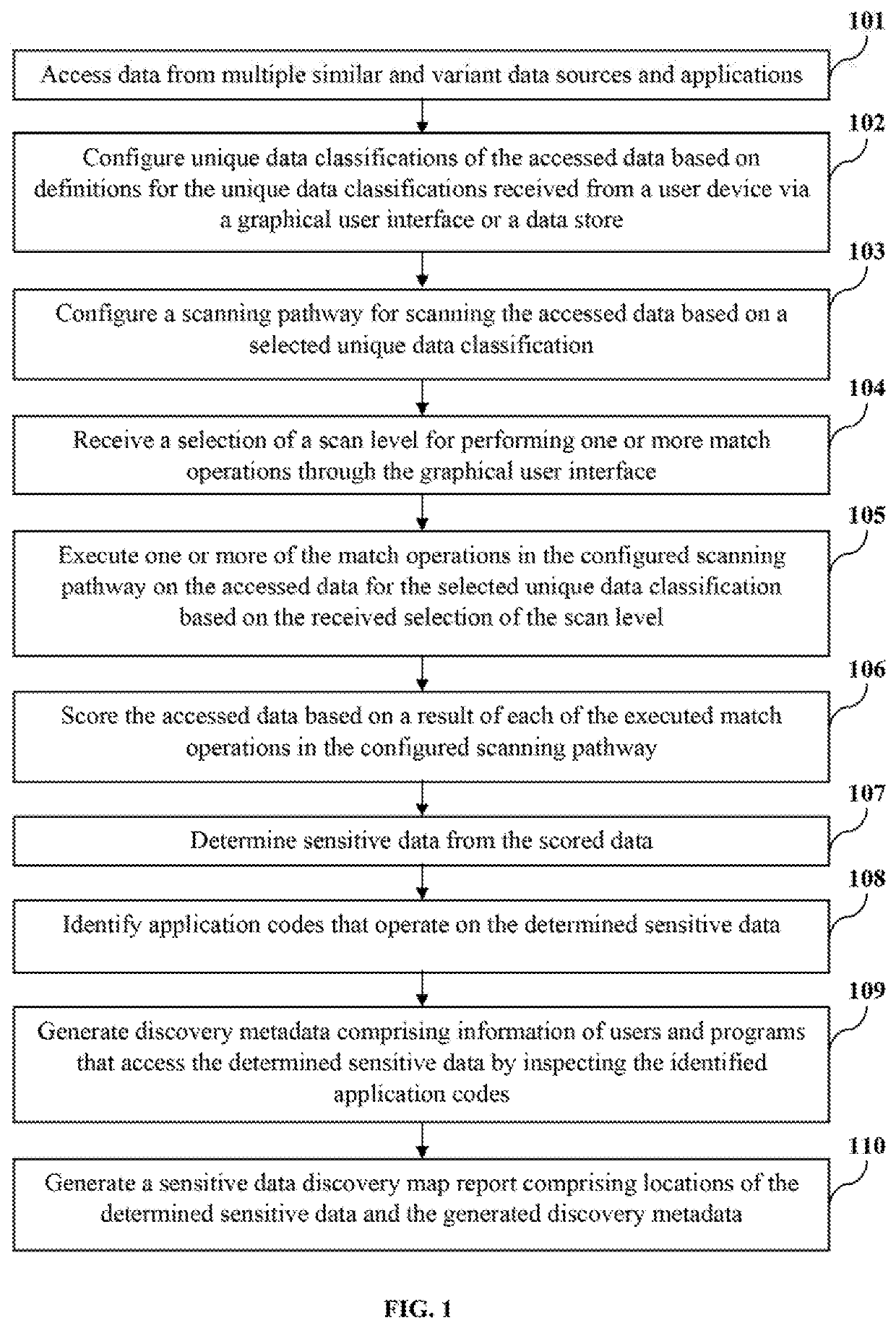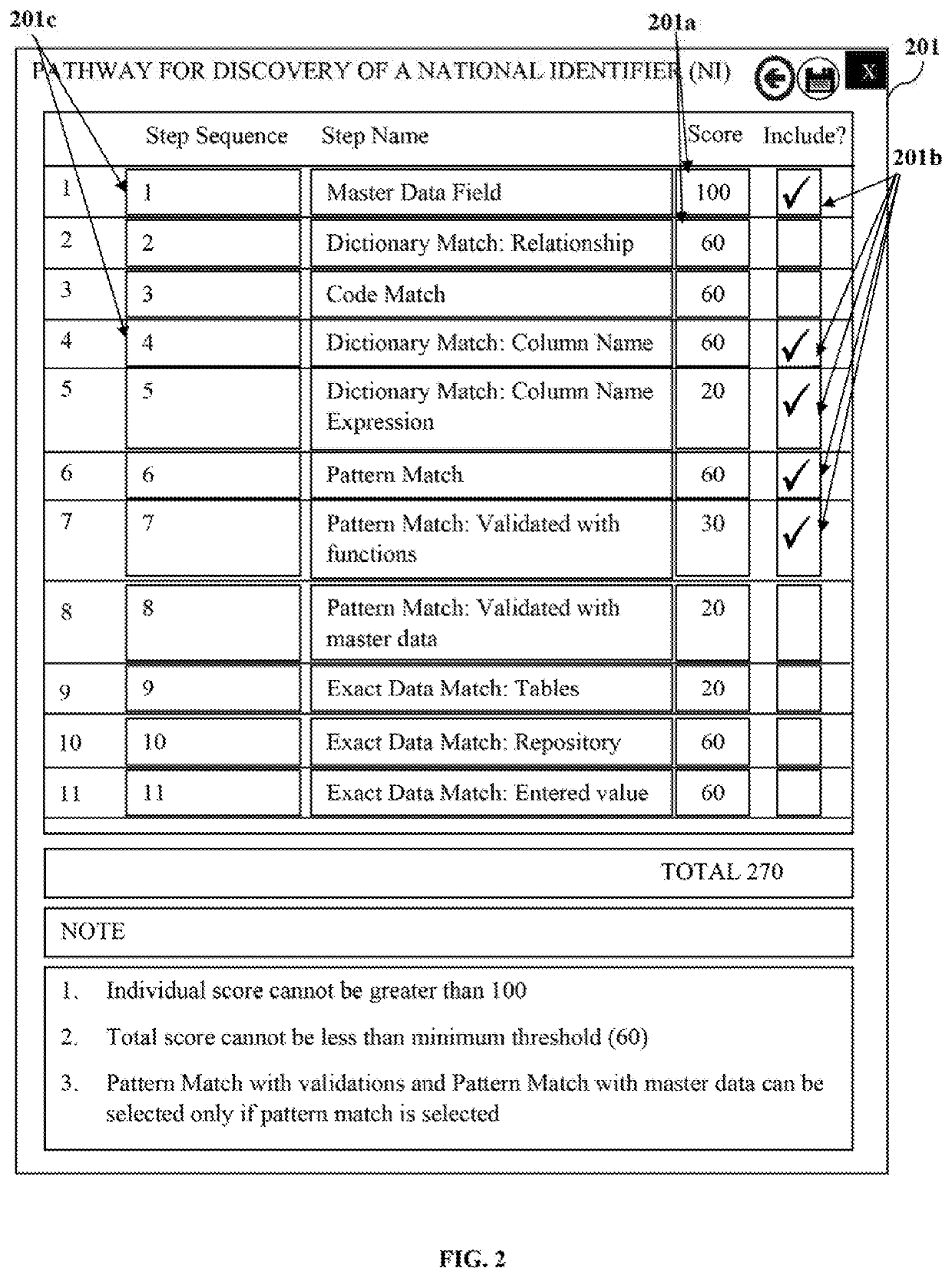System and method for data classification centric sensitive data discovery
a sensitive data and data classification technology, applied in the field of data security, can solve the problems of identifying sensitive data, difficult to process large volume of data using conventional database and software, and difficulty in taking appropriate measures to protect sensitive data
- Summary
- Abstract
- Description
- Claims
- Application Information
AI Technical Summary
Benefits of technology
Problems solved by technology
Method used
Image
Examples
Embodiment Construction
[0009]A primary object of the embodiments herein is to develop a computer-implemented method and the system to provide a platform for discovering a majority of sensitive data across various data sources including relational databases, hierarchical databases, file systems, text, documents, external files, complex data locations such as complex columns, composite data locations such as composite columns, binary large objects (BLOBs), character large objects (CLOBs), key value pairs, temporary tables such as plum tom tables created by a database, unvalidated fields, structured data sources, unstructured data sources, cloud data sources, big data sources, etc., and applications, with minimal false positives.
[0010]Another object of the embodiments herein is to develop a computer-implemented method and the system to provide a data classification centric discovery process based on metadata of an application using different data classifications.
[0011]Yet another object of the embodiments he...
PUM
 Login to View More
Login to View More Abstract
Description
Claims
Application Information
 Login to View More
Login to View More - R&D
- Intellectual Property
- Life Sciences
- Materials
- Tech Scout
- Unparalleled Data Quality
- Higher Quality Content
- 60% Fewer Hallucinations
Browse by: Latest US Patents, China's latest patents, Technical Efficacy Thesaurus, Application Domain, Technology Topic, Popular Technical Reports.
© 2025 PatSnap. All rights reserved.Legal|Privacy policy|Modern Slavery Act Transparency Statement|Sitemap|About US| Contact US: help@patsnap.com



